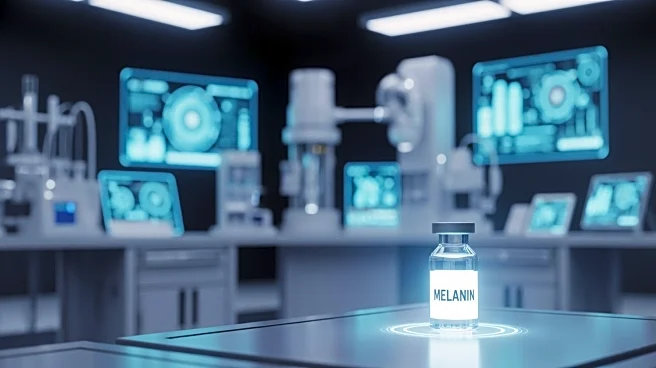What's Happening?
A research team has developed a highly sensitive ethanol detection sensor using RuO2 nanosheets functionalized on SnO2 thin films. The sensor design features a suspended structure that minimizes heat dissipation,
allowing it to operate at low power. The RuO2 nanosheets were synthesized through an exfoliation process, confirmed by scanning transmission electron microscopy and atomic force microscopy. The sensor demonstrated a significant increase in sensitivity to ethanol gas, with a response more than three times higher than that of pristine SnO2 thin films. The sensor's performance was evaluated across various ethanol concentrations, showing a strong correlation between sensor response and ethanol levels. The sensor also exhibited enhanced selectivity for ethanol over other gases, such as toluene and acetone, due to the chemical sensitization provided by the RuO2 nanosheets.
Why It's Important?
The development of this ultra-sensitive ethanol detection sensor has significant implications for industries requiring precise gas monitoring, such as environmental monitoring and breath alcohol testing. The sensor's ability to detect ethanol at low concentrations and its enhanced selectivity make it a valuable tool for applications in public safety, such as drunk driving prevention. Additionally, the low power consumption and compact design of the sensor make it suitable for portable devices, potentially leading to advancements in real-time monitoring technologies. The research highlights the potential for RuO2 nanosheets to improve sensor performance, offering a pathway for future innovations in gas sensing technology.
What's Next?
The research team plans to further enhance the sensor's performance by exploring advanced deposition techniques to improve coating uniformity. They also aim to address the sensor's slow natural recovery time by implementing a thermal reset pulse strategy. Future work will focus on developing a sensor array combined with advanced signal processing to improve selectivity in complex environments. This approach could lead to the creation of a multi-sensor platform capable of distinguishing ethanol with high accuracy, using pattern recognition algorithms. The team is also considering strategies to mitigate the effects of humidity on sensor performance, ensuring reliable operation in varying environmental conditions.
Beyond the Headlines
The development of this sensor represents a significant step forward in the field of gas sensing technology, with potential applications extending beyond ethanol detection. The use of RuO2 nanosheets as chemical sensitizers opens up possibilities for enhancing the performance of other types of sensors, potentially leading to breakthroughs in areas such as air quality monitoring and industrial safety. The research also underscores the importance of interdisciplinary collaboration, combining materials science, engineering, and data analysis to achieve innovative solutions. As the technology advances, ethical considerations regarding privacy and data security in real-time monitoring applications will need to be addressed.











